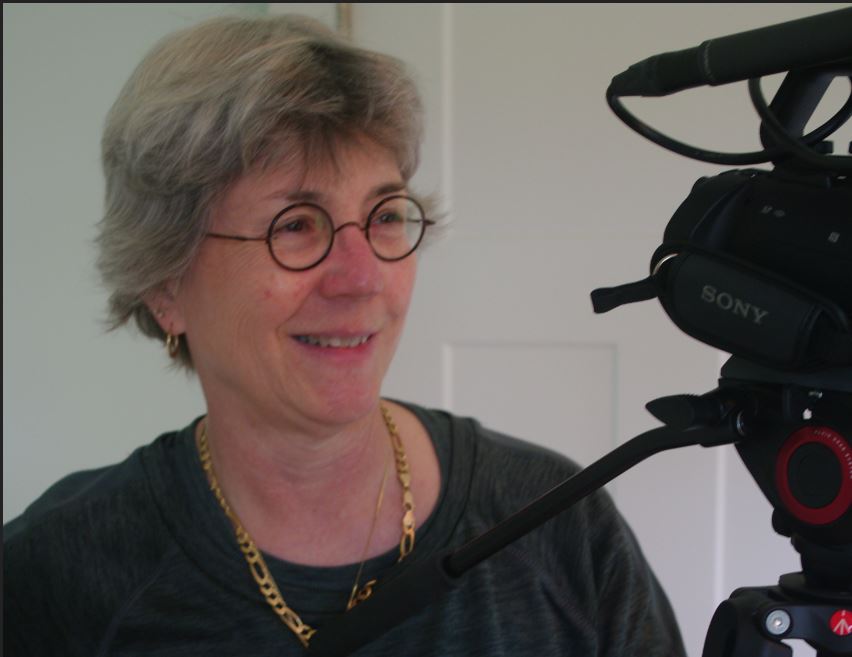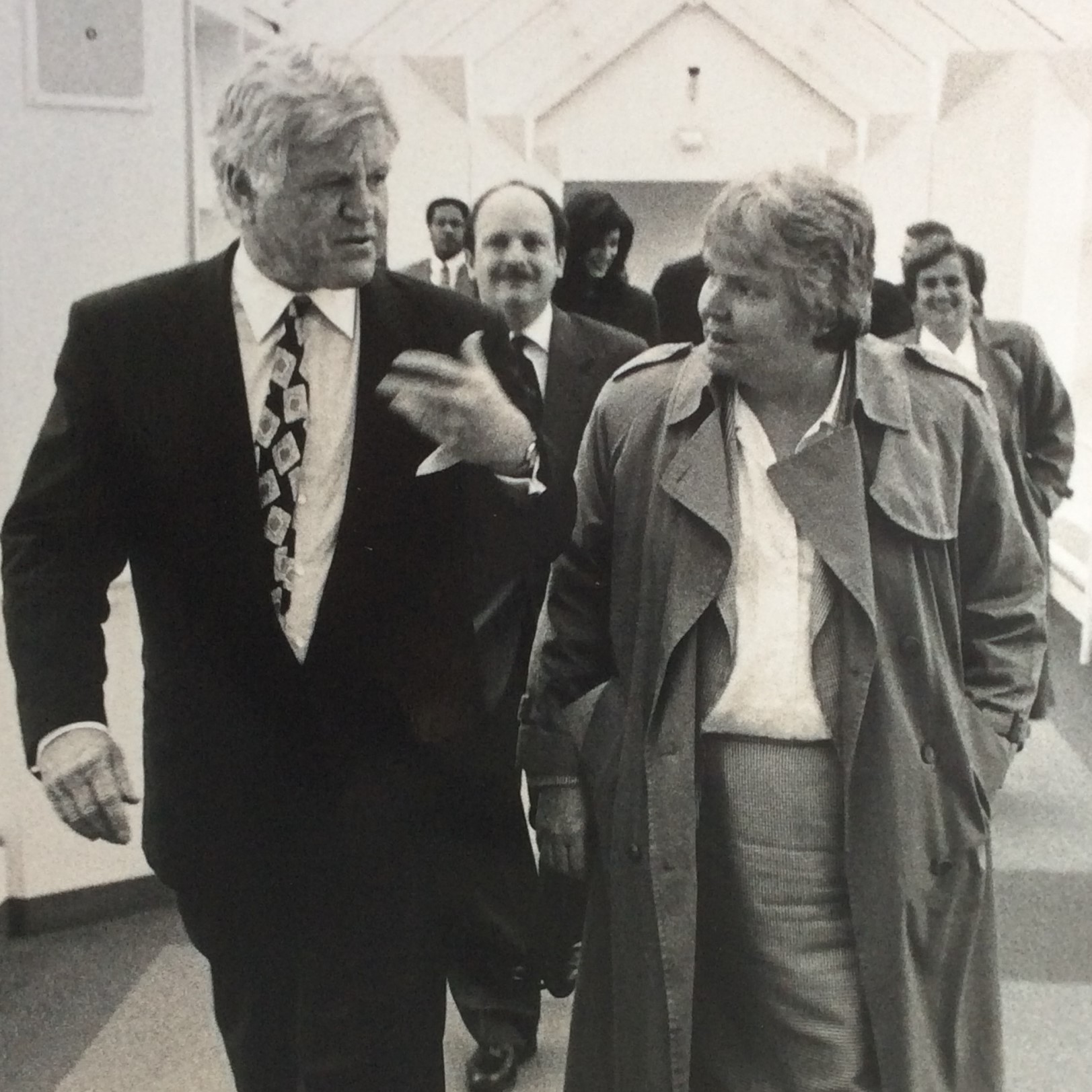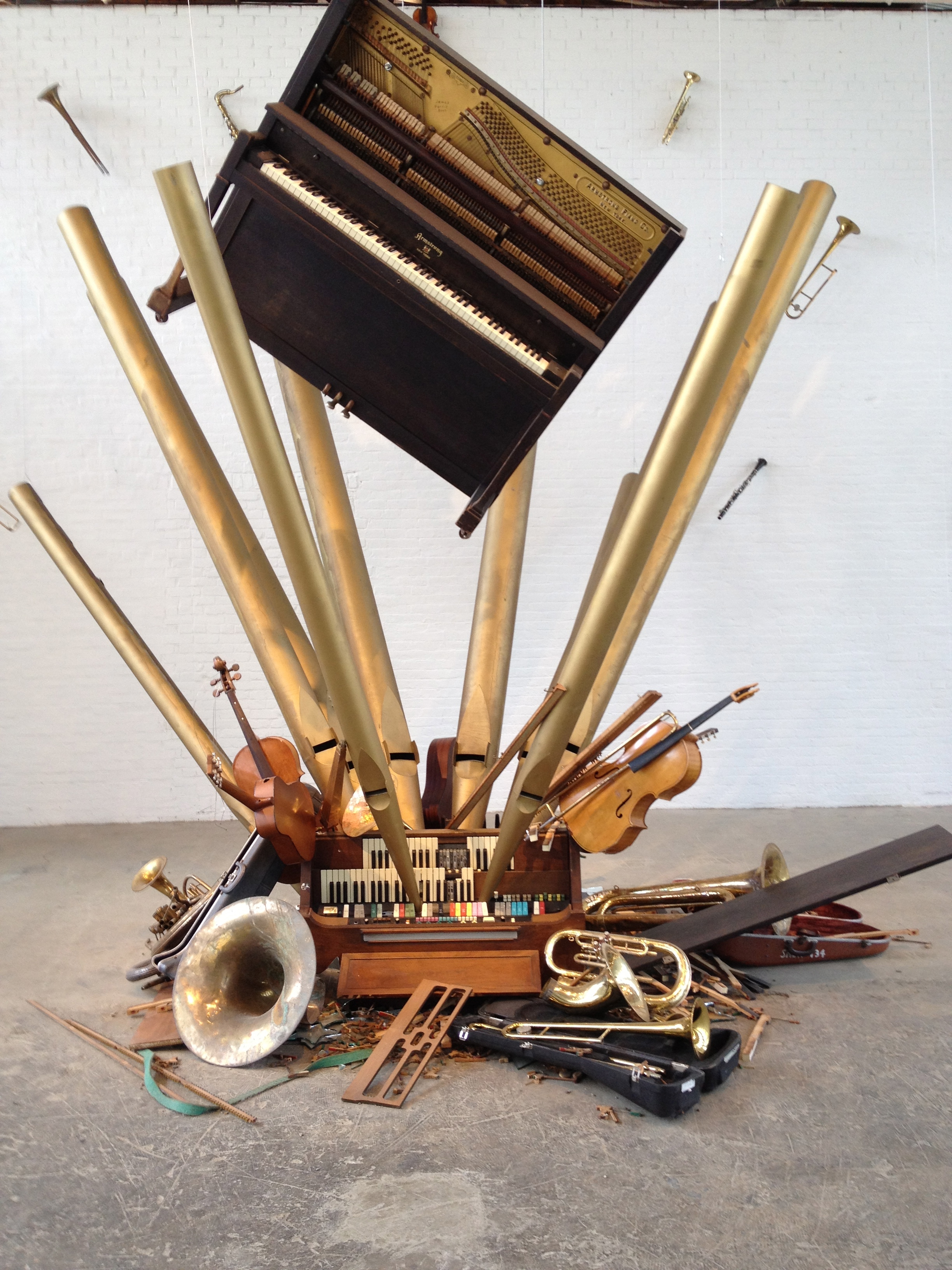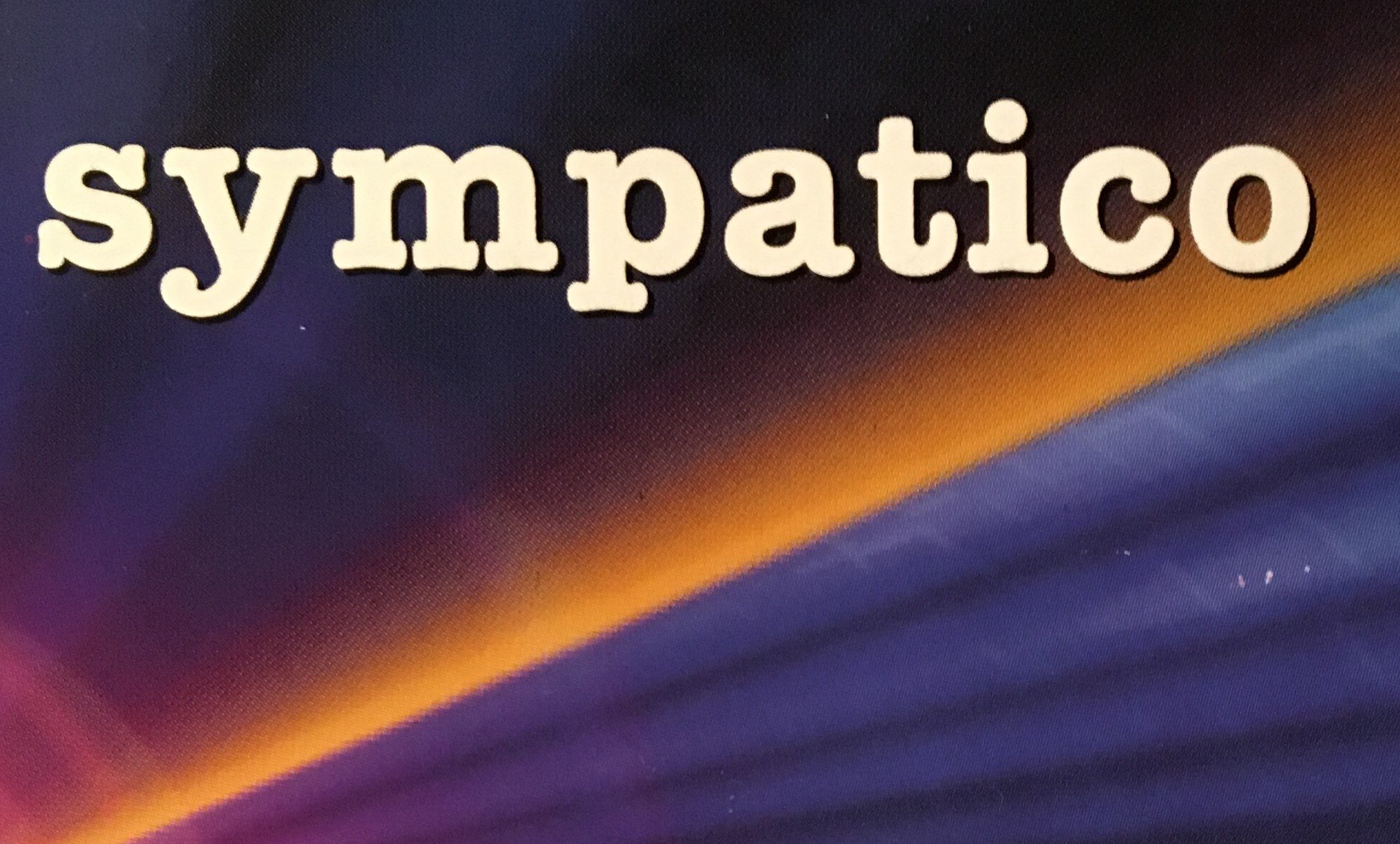Abstract: Its time to jettison the Romantic approach to life and art for a Neo-Renais sance approach exemplified by at least one multifaceted practitioner of music, technology and business, Steve Thomas.
sance approach exemplified by at least one multifaceted practitioner of music, technology and business, Steve Thomas.
Occasionally, there is a major paradigm shift that changes the set of ground rules we share and perceptions of the nature of who we are and our world view. During such times, the group assumptions upon which much thinking is based are themselves changed, and the “givens” in some very important conversations are shifted. Perhaps the most common example of such a shift is the change to the view that the earth was round not flat. Everyone in a conversation about trade, expansion, the nature of sea travel, a host of pursuits was suddenly grounded in a very different set of assumptions than they had been previously. This is a drastic and very concrete example, but I would like to draw a parallel to a shift that has started, and that I suggest will soon take hold across the culture. Those schools, colleges, artists and businesses that see it first, will help themselves to a considerable advantage in positioning competitively for the next leap forward in many endeavors. Further, there are examples of those whose lives are constructed to show the way, and I will recognize one of them.
Since the early 19th Century, the Western World has been deeply influenced by the paradigm of thoughts, beliefs and world view perpetuated by the thinkers of what we have come to call the Romantic Era. Some of the artists most associated with the Romantic Era include Jean Jacques Rousseau, Hector Berlioz, and Lord Byron, among many others. This body of beliefs replaced what is commonly called, the Age of Enlightenment, and in the view of some was most certainly not an improvement or advancement in human thinking. Why?
The Age of Enlightenment was typified by rational thinking, logic, and the growth of democracy and self-determination in Europe and America. The figures associated with the time are many, but include Newton, Kant, and Thomas Jefferson. During this period it was expected that scholars of science and medicine were also philosophers, writers, and potentially artists or musicians as well. There was not the specialization in one discipline to the exclusions of all others that has become prevalent in the 20th Century, and that I will argue is, to some extent, a byproduct of the Romantic Era.
During the age of enlightenment, there was an admiration of the Classical Greek tradition, and predecessors such as Aristotle had never considered limiting themselves to one area of study to the exclusion of others. Musical artists of the time include Bach, Handel, Mozart and Beethoven. Bach was a most prolific writer, and the composer of arguably some of the world’s greatest music, but he also taught, ran a church choir, and a coffee house. Handel ran an opera company in London, and worked for a number of wealthy patrons, writing to order for certain events. Few would argue that these occupations made them poor musicians. I mention this to set up a contrast with the self-concept and work approach adopted very widely by the artists of the Romantic Era, and to a large extent, still in fashion today.
According to Grout’s History of Western Music, on page 539, “Romantic art aspires to transcend immediate times and occasions, to seize eternity, to reach back into the past and forward into the future, to range over the expanse of the world and outward through the cosmos… and just because its goal can never be attained, Romantic art is haunted by a spirit of longing, of yearning after the impossible fulfillment.” Grout further states a few pages later (542) that, “It is just this period more than any other that offers us the phenomenon of the unsociable artist, one who feels himself to be separate from his fellow men and who is driven by isolation to seek inspirations within himself.” The Romantic artist is a loner, who believes that one hears the creative muse when alone, and preferably close to nature. The narratives of Romantic music and literature, frankly, are often self-destructive, and include themes such committing suicide as a result of unrequited love. Sometimes the object of the hapless artist’s affection doesn’t even know he exists. The Romantic artist is often tortured and suffers for his or her art. He or she (most often he, although Mary Shelly and the Brontes were exceptions) is often poor, outside the mainstream of society, single minded, often highly emotional, and beyond engaging in the concerns of ordinary people who do not have the artistic temperament.
It is true that having time and space to receive inspiration in peace, not bothered by the issues of day to day life, does contribute to creativity. The rebellion of these artists against what some viewed as the hyper rationality of the Enlightenment is understandable, and necessary to tap an entirely different, and less verbal side of human nature.
But anything can be taken too far. As we look back on the late 20th Century, we see the world filled with starving, struggling artists, many barely making a living. It is almost a given that you will hear an artist assuming a complete lack of competence, or interest in the affairs of the world such as business. The general population makes this assumption about the artist as well. According to the stereotype it is derigeur for artists to be very poor practitioners of anything that is not within the narrow band of their artistic pursuit. We take for granted that the artist will be unfamiliar with, uninterested and unskilled at other forms of human endeavor. Vincent Van Gogh is a stereotypical example of the Romantic Era artist. He was tortured, lived in poverty much of his life, was poor at managing his business affairs, displayed what was probably a significant mental illness, and ended his own life. The Don McLean song about him says that he was too sensitive for this world. While his is an extreme example, most artists exhibit some of the same characteristics. Because artists are notoriously unskilled at handling matters of money connected to their work, entire parasitic industries have sprung up and thrived to interface between the artist and the world. The members of these professions book artist performances, negotiate their recording and distribution deals, manage their “images” and the ways in which the world finds out about them and their work. Why? Because the artist is supposedly incapable of doing these things for a variety of reasons. These functions take away from creative time. Perhaps that is so. They are indicative of a skill set that is assumed to be incompatible with the creative mind, brain, personality. If you are an artist, these things are below you, or alien to you, incomprehensible. We have inherited a very narrow view of the Romantic artist, and few artists even question that construct themselves. If it was ever useful in some cultures and economies to embrace that view, I suggest that those days are most definitely behind us, and in fact, for artists they need to be. The paradigm just described has become so ingrained as to have become an entirely self-fulfilling prophesy.
Now here we are in the 21st century, carrying with us some paradigms from the Romantic era that are not particularly helpful to us, or reflective of the multiple types of intelligences and interests that people have, not to mention the skill set needed to find success in the 21st century work environment. It is time that we cultivate a Neo-Renaissance approach to life and work that honors the capacity of all people to be more than one thing. It has been said that the performing musical groups from MIT rival those of Boston’s music schools. Is this because there is a strong cross over between musical thinking and mathematical thinking? When I interviewed 16 female jazz musicians for my dissertation, a large number of them indicated that a talent for drawing and painting had also been noticed in their youth. Some musical artists like Jay Z, Madonna and Quincy Jones have shown tremendous acumen in managing their careers as well as their artistic lives.
In a time when people have multiple careers over the course of a lifetime, and when there are many fields of study at play in most careers at once, the idea of specializing in just one thing is anachronistic. Let me use music as an example. The concert violinist needs to be the consummate performer, but what such artist would not be well served by understanding the production side of their recordings, the development of their saleable image, the coding behind the remixing of their lines in a multimedia presentation, the distribution of music in the age of Streaming?
Young artists will find it helpful to have role models while building a creative life that is successful in the contemporary world. I can suggest one.  Steve Thomas of Atwood Media is just such a person. Steve has consistently ignored the boundaries that are assumed to exist for a person of his creative bent. What does that look like? Young Steve started as a conspicuously talented guitar player. He could play Jazz, and all other styles of music unusually well for a teenager, raising eyebrows among his father’s circle of professional musician friends. Then he found he had an aptitude for composition, not inconsistent with his performing acumen, and generally accepted within the musician stereotype. Then he showed a high level of skill and interest in the production end of music: recording, mixing, and mastering, much more technical pursuits grounded in math, science and engineering. Steve then demonstrated an ability to see from the rooftops the ways to position music, products, thinking in the world and demonstrated an ability to market and position a variety of products related to the music industry, and interfacing worlds of technology, both hardware, software, and all types of connectivity. None of these things has interfered with Steve’s ability to produce amazing music, or play at a high level. In fact, there is a good argument that they have enhanced and enriched those talents.
Steve Thomas of Atwood Media is just such a person. Steve has consistently ignored the boundaries that are assumed to exist for a person of his creative bent. What does that look like? Young Steve started as a conspicuously talented guitar player. He could play Jazz, and all other styles of music unusually well for a teenager, raising eyebrows among his father’s circle of professional musician friends. Then he found he had an aptitude for composition, not inconsistent with his performing acumen, and generally accepted within the musician stereotype. Then he showed a high level of skill and interest in the production end of music: recording, mixing, and mastering, much more technical pursuits grounded in math, science and engineering. Steve then demonstrated an ability to see from the rooftops the ways to position music, products, thinking in the world and demonstrated an ability to market and position a variety of products related to the music industry, and interfacing worlds of technology, both hardware, software, and all types of connectivity. None of these things has interfered with Steve’s ability to produce amazing music, or play at a high level. In fact, there is a good argument that they have enhanced and enriched those talents.
The moral of the story? If you are an artist, don’t allow yourself to accept limits. Listen to the many things that may call you, or be necessary for your higher level of survival in this world. Don’t assume that you can’t manage your money or understand the trends of the economy, or that these skills will somehow damage your ability to create art.
It is time for schools and colleges that charge considerable tuitions to broaden their concept of the artist, or even the liberal thinker, to embrace some of the skillsets that can enhance effective participation in the 21st century world. I do not suggest that as a culture we stop producing artists, or liberal arts majors. Indeed, these people are absolutely necessary in a world that any of us want to live in. Rather, relinquish the associations that have led to an “if this, then not that,” thinking that has led people to work and think in silos for generations. Ironic, that Romantic Era thinking, so grounded in freedom, and passion could get caught up in what is really just a hyper logical limitation.





